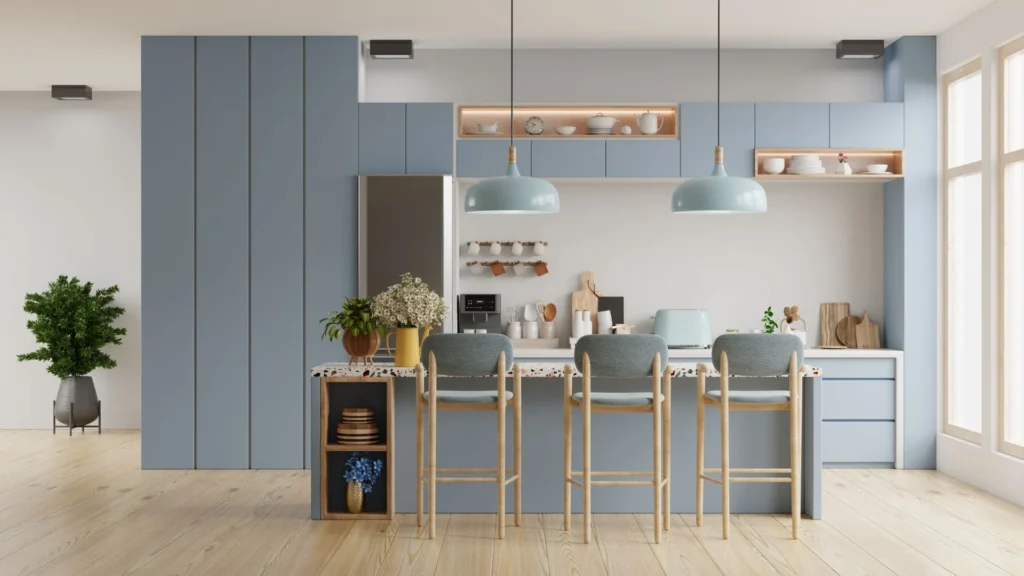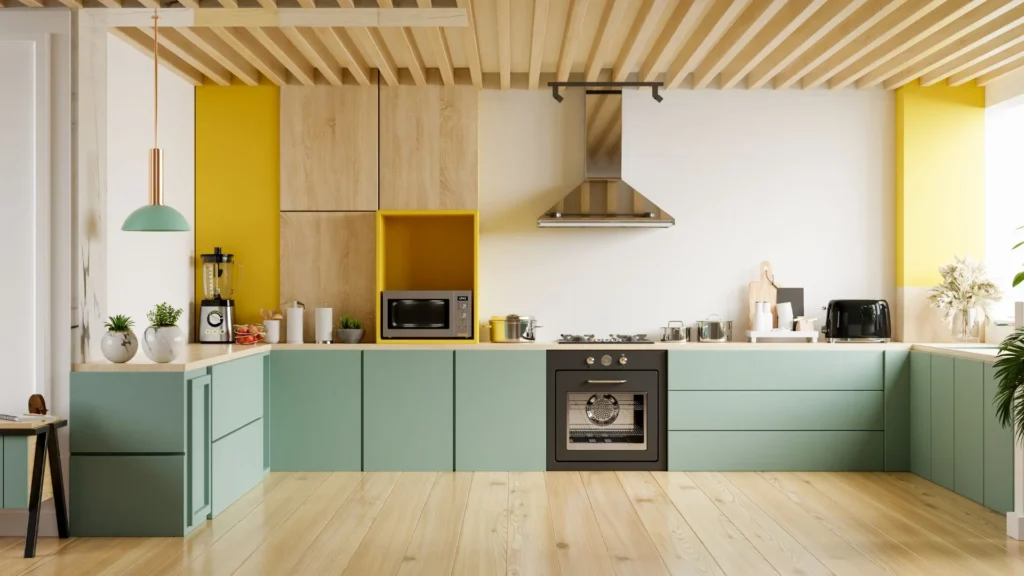A kitchen hosts meals, memories, and family reunions. When creating or renovating a kitchen, flooring is crucial. Foot traffic, spills, stains, and the movement of furniture or appliances damage kitchen floors. The right flooring material for a busy kitchen must be durable, attractive, and functional. This blog discusses the best kitchen flooring options, their benefits, considerations, and maintenance needs to help you design your dream kitchen.
Factors to Consider When Selecting Kitchen Flooring
It is vital to take into consideration a few key aspects before delving into the several available varieties of kitchen flooring. First things first, take a good, hard look at your lifestyle and determine how much time you can realistically devote to cleaning and maintenance. In addition, you need to think about the style and aesthetic you want to accomplish, the level of durability that is required, and your budget. When you choose the best flooring for your kitchen and take these considerations into account, you will be able to make a decision that is more informed and well-informed.
1. Hardwood Flooring
When it comes to hardwood flooring options for kitchens, there are plenty to choose from. Oak, maple, and cherry are popular choices due to their durability and aesthetic appeal. Each type of wood offers its own unique grain pattern and color variations, allowing you to find the perfect match for your kitchen’s style. Professionals or adventurous DIY enthusiasts can install hardwood flooring in your kitchen. However, it’s important to follow proper installation techniques to ensure a long-lasting result. As for maintenance, regular sweeping and occasional mopping with a hardwood floor cleaner will keep your kitchen floor looking its best.
2. Tiles
Ceramic and porcelain tiles are the go-tos for most kitchen floors. They come in a wide variety of colors, patterns, and sizes, allowing you to customize the look of your kitchen. Natural stone tiles, such as marble or travertine, add a touch of luxury and elegance to any kitchen.
Tile installation typically requires professional expertise to ensure proper leveling and grouting. It’s crucial to choose a reputable installer to achieve a flawless finish. Regular sweeping or vacuuming, coupled with mopping using a mild tile cleaner, will keep your kitchen floor sparkling clean and free from dirt and grime.
3. Laminate Flooring
Consider longevity, moisture resistance, and appearance when choosing laminate kitchen flooring. Look for laminates developed for kitchens, which have a moisture-resistant core and protective top layer.
The convenience of installing laminate flooring is a major benefit. Easy DIY projects and low installation costs are possible with interlocking planks. Brushing or vacuuming and occasionally damp mopping will keep your laminate kitchen floor clean. Wipe up spills quickly to avoid damage.

4. Vinyl Flooring
Vinyl sheets, tiles, and planks let you choose the perfect kitchen flooring. Vinyl tiles and planks are versatile and easy to repair, while sheet vinyl is economical and covers vast surfaces flawlessly. Vinyl flooring comes in many colors and designs to match your kitchen design, from basic tile to wood-like.
Vinyl flooring’s click-and-lock or peel-and-stick methods make installation simple. Vinyl flooring is also easy to clean; sweep or vacuum regularly, and mop with a light cleaner when needed. Your kitchen will look great for years with this low-maintenance flooring.
5. Cork Flooring
Cork flooring is available in many colors and patterns to match your kitchen decor enabling you to find a cork floor that matches your kitchen design in natural earth tones or vibrant colors. In addition, for spill and stain resistance, use cork flooring with a polyurethane finish.
Professional installation is recommended to avoid complications. Moreover, scouring or vacuuming your cork floor regularly keeps it clean which will make your kitchen’s cork flooring attractive and sustainable for years.
Factors to Evaluate when Selecting Kitchen Flooring
When selecting the ideal flooring for your kitchen, some important considerations to keep in mind include comfort, longevity, resistance to water, and simplicity of upkeep. Because kitchens are high-traffic areas that are also prone to spills, it is essential to choose a flooring material that is capable of withstanding the demands of your busy kitchen while also maintaining its attractive appearance.
Matching Flooring Options to Kitchen Styles and Needs
Different kitchen styles call for different flooring options. For a sleek and modern kitchen, consider materials like tile or polished concrete. If you prefer a rustic or farmhouse-style kitchen, hardwood or laminate flooring can add warmth and charm. Furthermore, be sure to also consider your specific needs, such as budget, maintenance requirements, and your family’s lifestyle, when choosing the right flooring for your kitchen.

Choose the best kitchen flooring by considering longevity, style, comfort, and maintenance. Kitchens with cork flooring are eco-friendly and comfortable, while vinyl flooring is waterproof and durable. Consider your kitchen’s needs and personal preferences to make a decision that improves its attractiveness while fitting your lifestyle. Soon you’ll be kicking off your shoes and enjoying your new kitchen flooring in style!

